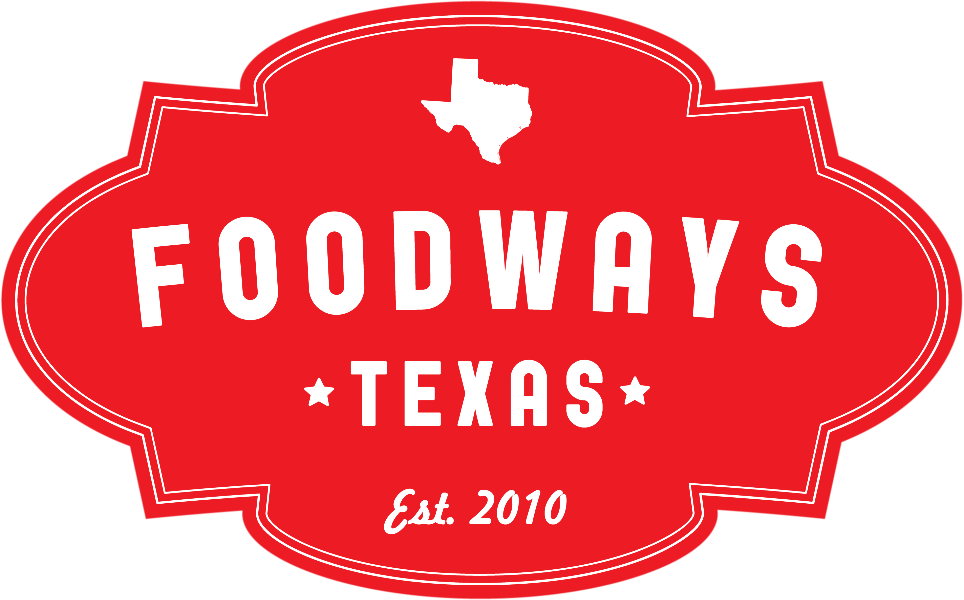Interviewer: Rien Fertel
Location: Gatlin's BBQ, Houston, Texas
This interview is a production of Foodways Texas. Photos by Denny Culbert.
Greg Gatlin opened his family’s namesake restaurant with his mother and father in June 2010. A graduate of Rice University, in business, Gatlin and his parents run their establishment like, what he calls, “a conglomerate of heads.”
The brisket is smoked over hickory wood at 250 degrees for a dozen hours. Gatlin’s menu reflects Houston’s melting pot of cultures, including some traditionally non-Texas items like pulled pork, smoked turkey, deer sausage, and Louisiana-style dirty rice.
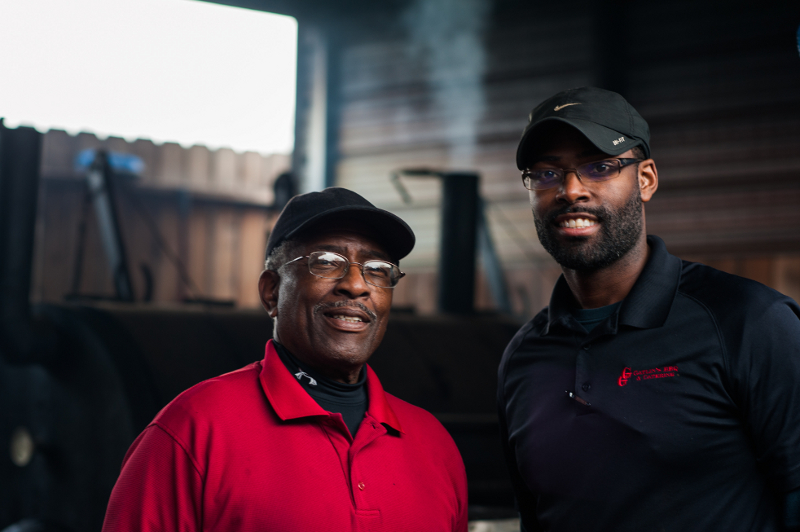
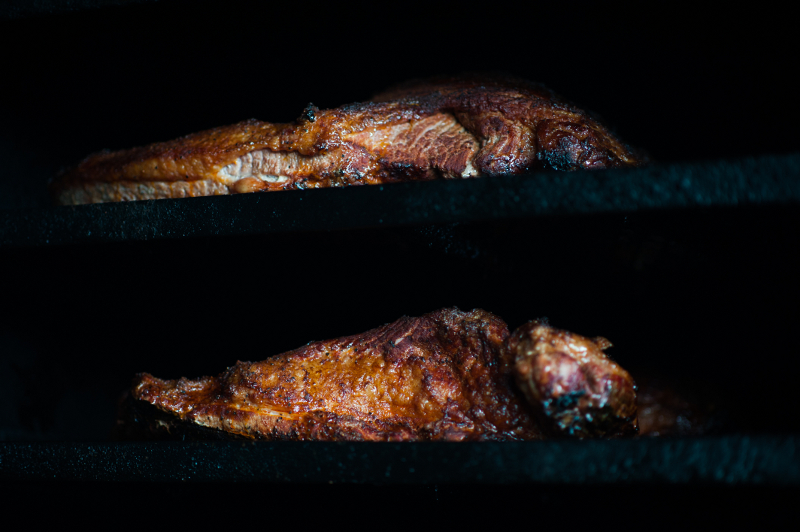
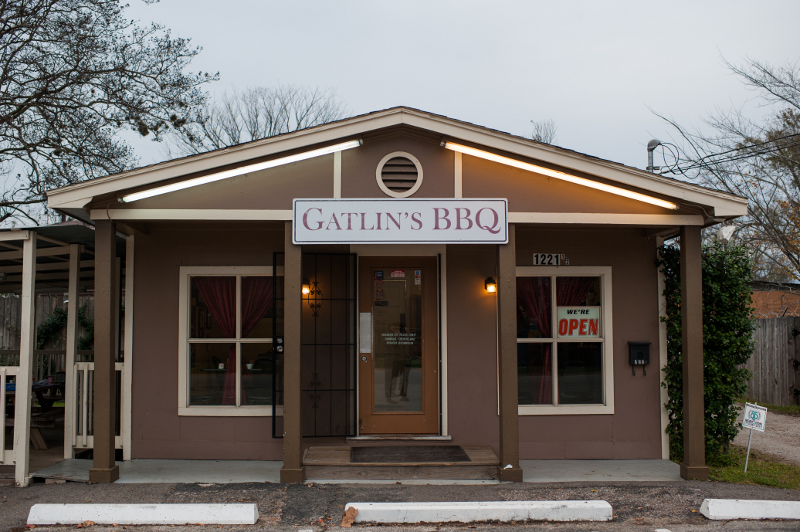
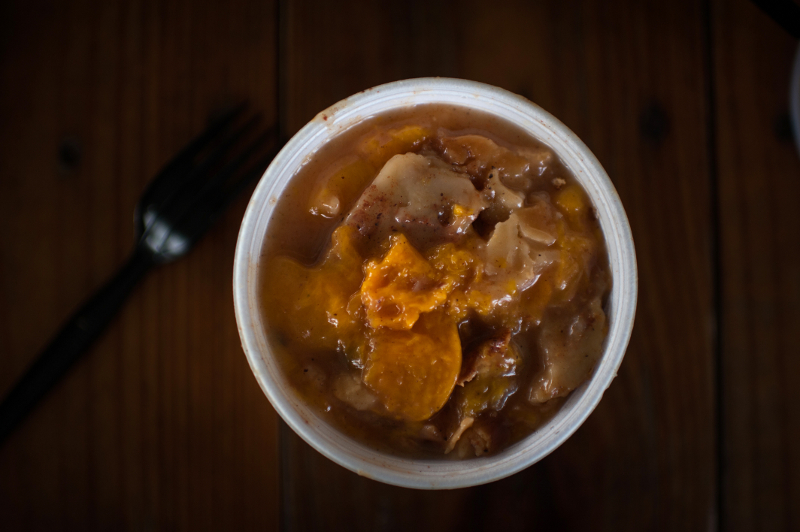
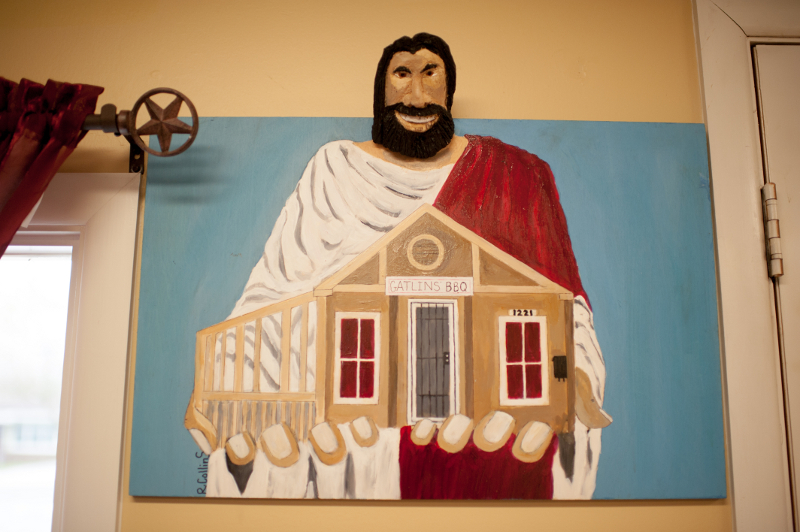



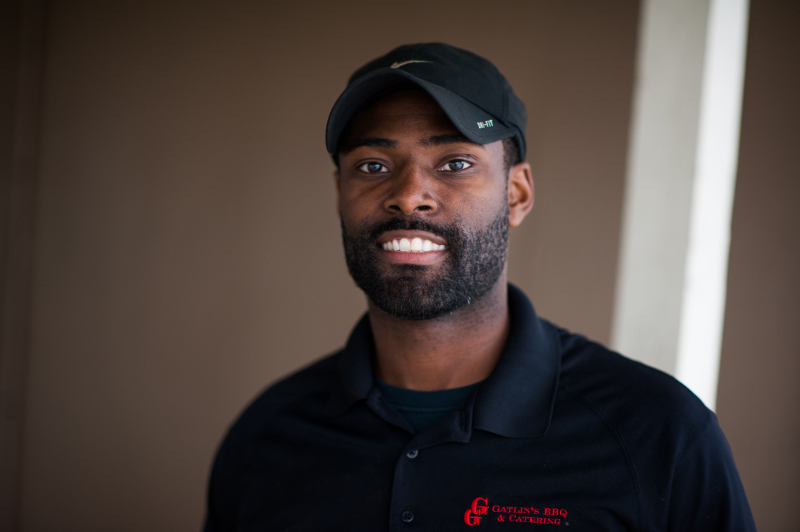
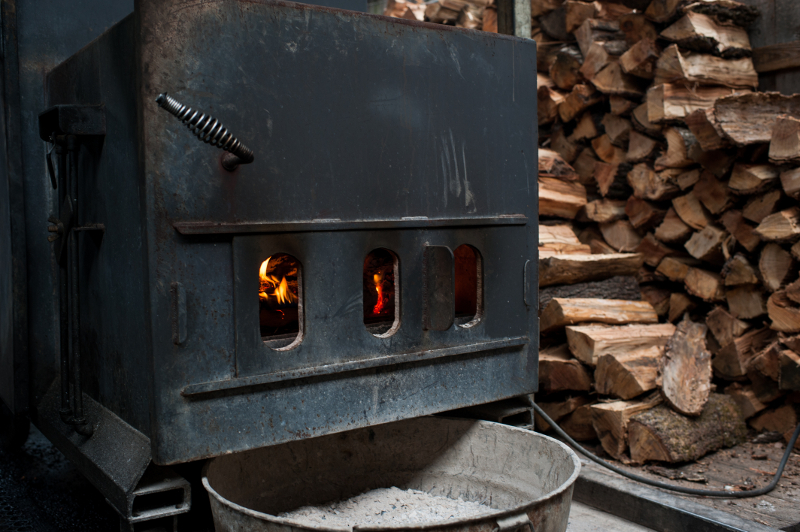
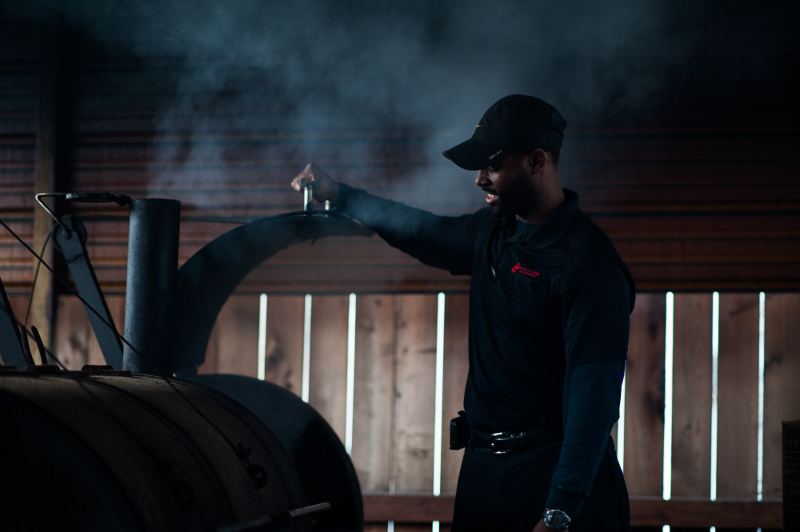
RIEN FERTEL (RF): Alright, check, check. Okay. This is RF with Foodways Texas continuing on the greater Houston Barbecue Trail, we’re calling it. It is Friday, January fourth, three fifteen [3:15] in the afternoon, and I am sitting here with Mr. GG, I am going to have him introduce himself.
GREG GATLIN (GG): Hi guys, this is Greg Gatlin, born twelve, twenty, seventy-nine [December 20, 1979], and we’re here at Gatlin’s Barbecue.
RF: Tell us how old Gatlin’s Barbecue is—when did you establish it?
GG: This year we will be three years old in June, so, we’ve been around here just over two and a half years now. Slightly before that, we catered about a year and a half to almost two years, so, in total, about five years now in the business of barbecue, so.
RF: So, a young business—but talking to you yesterday, and just briefly again today, you talked about barbecuing a lot, or cooking a lot at home, and before you established this restaurant. Talk about that: How—What kind of Barbecue did you do as a family?
GG: Oh Man, every event that you could possibly think of, we have probably barbecued for; from birthdays, to weddings, to Christmas, to Thanksgiving, to just because. [Laughter] So, I mean, we’ve had—I mean, barbecue is just one of those kinds of family style meals you gonna to feed a lot of people, and gonna have a lot of fun doing it. That’s kind of—you know, how the whole tradition of barbecue came across in our family. My dad’s uncle, John Henry, had a barbecue place in Louisiana—right outside of Mansfield, between Mansfield and Logan’s Port—where they did a lot of barbecuing, and everyone in that area knew where that particular barbecue joint was—old brick pits, and stuff, and they did a lot of big pork butts and shoulders, and shanks, and all that kind of stuff, so. We have a—we have a little bit of tradition in the barbecue business—just some gaps in between there from generation to generation.
RF: So, where does your family come from?
GG: Oh, wow—we’ve got—we’ve got roots—Most of the roots between here and Louisiana, then we’ve got some other folks in Alabama, and Georgia. So—we’ve kind of—we kind of span from southeast, far west as Texas—couple folks out in California, but, we you know, we don’t see them as much. It’s not our—cooking, roots come from, by far. But most of, like I said, most of our cooking roots are from Louisiana to Texas.
RF: And were you born here in Houston?
GG: I was born here in Houston—born here in Houston, born and raised. Actually I’ve never left—It’s—it’s so funny. Every, Everybody thought that I was going to be the one to leave, but I—I’ve been here, went to school here at Rice University. So,—Native Houstonian, you know, love it to death—it’s a great city. We have—I’ve seen the progress in the city, and the evolution of, you know, neighborhoods dying, and coming back again. Seeing kind of the restaurant industry, you know, being outside of it, now being inside of it. You see it from a totally different prospective, and it’s, it’s good to see its growth—it’s good to see its growth. I think it’s going in a really good direction. And—hopefully, you know, we can keep that up with, you know, with our establishment being, you know, one that’s, that’s new, but hopefully to—to keep the tradition going.
RF: What did you study at Rice?
GG: Economics, Management, and Sports Management. So, it is, it’s so funny, cause actually I started at physical therapy, and I was like—yeah, I don’t want to do that anymore. So—[Laughter] So, I got into the whole finance thing, I thought it would be, you know, easier transition going from college into the work force. So—but.
RF: Does it help, or does that translate being a business owner?
GG: It does, some of the mechanics, you know, here and there, but nothing beats being thrown in the fire. You know, before—before I actually got into this restaurant, I was working with Pappas family at—at one of the Pappadeaux concepts. So, I got a—I got some training there, as far as the management side, of actually managing a restaurant and managing people, which was probably one, probably one of the biggest things—one of the biggest tools that helped me, because it’s one thing to be able to manage a process, but managing people is, you know, something that you have to really do in—in order to be good at it. So—
RF: You—just said, thrown in the fire—So, when you started this place two and a half years ago—what were those first days weeks like?
GG: Oh, man—actually it—it was—there was no one here—there was me—myself —there was myself, my mom, my dad, and then one other employee. There was the four of us. The days were extremely long. We were trying to, you know, get everything figured out, as far as the pits—how much to cook, how much not to cook—and we didn’t—we had no idea—kind of what was gonna happen. And those first months, so, I’d say probably, through the summer coming up into November, you know, it was kind of a—it was kind of a steady pace, and then all of a sudden—we started— the Houston Press came out with the best barbecue awards, and we actually won that barbecue—we won that deal and then, the Houston Chronicle—Chronicle came out with another article. And so, all of a sudden, we just got—I mean , we just got—bombarded with —business, and so, once that kind of started, and I was kind of like, “Oh my gosh, what are we gonna do?” And so, that was [Laughter] that was my baptism into—into the restaurant business, and the demand that people wanted. You know, they didn’t want to—they didn’t care, if you were in business a day or, you know, ten years, they just wanted their barbecue, and they wanted it now. [Laughter] So, you know, we kind of—we kind of—figured our way out of, you know, trying to knowing how much meat to cook, knowing how to get it done,—and, and our hours were actually longer, at that point in time. We actually—we actually closed at nine o’clock then, and—we were, we were probably, we were probably getting home at midnight every night, and then having to be back up here for about four o’clock, four-thirty [4:30], to try—to get on the rest of, the rest of the meat, and all that kind of stuff. So, we—we didn’t sleep much with in the first year—of being in business, but like I said, I mean, that’s a, that’s a good thing—It’s a good problem to have. It’s just better than trying to figure out marketing schemes, to try to get people in the door, you know?
RF: And—You mentioned your parents, do they still work here?
GG: There are. Both of them are still here. Matter of fact, if you guys have—looked at the—at the internet, the lady on the front—on the front picture, that’s my mom. So—great lady—has raised three very successful boys, and—turned them into some good men. Dad’s always been there with that steady hand. Very calm—very calming force, but very strict—what he wanted out of us. He wanted us all to succeed, and he’s, he’s done it, and then he’s absolutely done it. We joke with him all the time, like, “You’re working harder now than you did when you—before you retired.” [Laughter] So, you know, that’s our little running joke with him. They ask him if he is ready to retire again? He says, “You better believe it.” So, he’s trying—he’s trying his best to get out of here, but I think he, he really enjoys it. He really enjoys the—the success of the business, and starting something from the ground up. You know, and it’s been great, absolutely great.
RF: And who—did, or does the cooking at home, between your parents—both kitchen and—and outside smoking?
GG: Mom did—Mom did most of the cooking. Dad did, if we were barbecue, or grilling, or smoking, or something like that. Dad was the one to do that. So, you know, we got, we got it from both sides, you—you know. We learned how to do stuff on the inside from Mom, and all the smoking and stuff from Dad on his end. So, both of them kind of shared in that responsibility, but Mom did a lot of the cooking. You know, because Dad actually had to travel quite a bit—when we were young—he was, you know, back and forth, in and out. But he was always—he was always there, there for football games, there for anything we were having. He was, he always made it—made it a priority to be there for that kind of stuff, so he gave us some good roots.
RF: And do any of your mom’s recipes—appear on the menu in sides, or anything else?
GG: Absolutely. We’ve—we’ve all come together to—it’s kind of been more of a conglomerate of heads, between, between myself and her. Dad throws his input in there, whether it taste good, or not. [Laughter] And he’s more on the meat side of things, but— the two of us we, you know, we come together. She may have something, a recipe, as far as, green beans, or the dirty rice, or something like, you know, like, “Hey, I think we need to tweak it a little bit, you know, do on this, or, you know, maybe we need to just totally go a different direction with it.” As far as like the potato salad—or, when we started, we were thinking about doing a sour cream and mayo type a deal—it was like, “Nah, we don’t want to do that.” So, we went with a mix between [phone ringing] mustard and potato—mustard and mayo. That thing works out well for everybody, as far as a balance, you know, because—it’s kind of hard to be all things to all people. But I think if we kind—we kind of got in the middle where, you know, it’s not too sweet, it’s not too dill, it’s, you know, it’s kind of in the middle, it’s kind of where we want to stand, as far as, you know, a taste for, for our guest. So—
RF: And let’s talk—the barbecue, let’s talk the brisket. What makes your brisket great? What do you do to it?
GG: Well, I think it’s—it’s a combination of the rub, we developed the rub. So, I think the combination of the rub, and the right temperature, and then just taking your time. You know, as much as you want to—you want to rush meat, as much as you want to get it done, as much, as much as you don’t want to come back, and put wood in the fire, and, “Oh, my gosh, do I really have to go back and do it again.” It’s that consistency of keeping the temperature, keeping the seasoning, and then the—keeping the timing, the same day in and day out, I think is, is the, is the key behind having a good brisket. Because I mean, it’s think, you can have—what I have seen with a lot of places, their brisket maybe good one day, and it may not be as good another day. And, you know, you can just tell from either a—a tender—being as far, as being as tender as it needs to be, or not. Like I said, it’s just a matter of, like I say, having a, having consistent heat, having a consistent recipe—As far as your rubs, and then—the timing. You know—
RF: What kind of time and temperature do you aim for?
GG: We usually—on an uninsulated pit as we—as we do, we probably—we probably range in close to about two-fifty [250], and probably about twelve—twelve hours or so. On ours, and you may—you may need an extra hour, or an hour and a half, but—like I said, with our briskets, between twelve—fourteen—between twelve to fourteen pounds, about closer to about fourteen pound briskets—right about twelve hours—or, thirteen hours. Yep—
RF: So, how do you know when they are done? Is it by look, is it by touch?
GG: I think it’s a combination of both—of both. You can see it, you know, you can see the bark, you know, on the brisket. And then the biggest thing is just the touch. If you—when you touch—when you touch that brisket, and you can almost, kind of push your finger almost where—where it’s gonna go through, but it—it has enough give to where it doesn’t. That’s when you know your brisket is tender enough for you to go ahead and take it off. So,—and then, you know, like I said, you get a—you get a feel for how the thing looks, and how—how it feels. You just, you know it, and, you know, it’s almost like you talking to somebody like, yeah, you know, “I’m done.” [Laughter] So, you know, and that’s—that’s what I tell everybody it’s like, isn’t that, you know. You can put a probe on it, and stick a, you know, thermometer inside of it, and it’s telling you one thing, but, you know—you know, what a brisket feels like, and that’s what it’s going to taste like in your mouth, at the end of the day. So, that’s what we look for in our brisket.
RF: And—describe the pit is it—is it inside, outside? What’s it look like?
GG: It’s a—it’s a combi—it’s a combination of smoker, be it indoors, or outdoors. It’s a steel pit—off set fire box, indirect heat—going in there—. It stands upright about six foot tall. So six by—six by six—on the size—on the size of that deal. Holds about thirty briskets—on it. Like I said, we cook—we cook our meat about 250 or so, on that double wall insulated—thickness on the steel, so,—it holds heat a lot, a lot better than—than your standard any—any of you standard pits. Because that’s—that’s your biggest thing. You want the—you want your temperature to hold, and be constant, and have a lot of heat for an extended period of time. So—
RF: Did you have it custom built?
GG: Yes—by Klose Barbecue Pits here in Houston. Guys—he’s been around forever—very well known, as far as his pits. He’s got pits been made around the world. Last time I was talking to him he was making a pit for somebody in Japan. So, you know, go figure. But, he’s got it—he’s got it down. I think we’re kind of cut from the same mold, from that stand point of,—I don’t want to be a production style of a—style of an owner. We want—we want to deal in quality, you know, I may not—I may not send out 200, but I’m gonna send out a hundred that are going to be the best. You know, and so, that’s kind of what we strive for, and I think that we want the same things—from our businesses, so, I think it was—a good—a good marriage there, as far as when we were looking for pits.
RF: And what do you use as a fuel source?
GG: We use hickory wood. That’s—we used to use a combination of hickory and mesquite—used to use mesquite as more of a heat source. But—I think we wanted to eliminate that kind of bittery bite of the mesquite, so, we went to an all hickory format, and—it’s done—it’s done well for us. It’s a—it’s a bold—it’s a good bold flavor—which is what—which is what you want, as a flavor in your meat. You know, you can—you can have something where you don’t really taste the—you don’t really taste the wood in the flavor, and at that point it’s not barbecue, if you ask me. That’s the—it’s principle of it your cooking with smoke, you know, and you use the smoke to flavor your wood, so, you have a consistent low heat, and flavoring it with whatever—whatever wood that you want to use. Whether it’s, you know, pecan, oak, hickory, mesquite, whatever you want to do—so.
RF: Is there a—you have lived here your whole life—is there a Houston style of barbecue? Does Houston have a—a barbecue vernacular?
GG: I mean—I wouldn’t—I wouldn’t say so. I wouldn’t say that, just from the stand point of it,—because yeah, you mean, when you look at—like Austin and the Hill Country area—you know, they’ll do beef ribs, and stuff like that. I think,—because Houston is such a melting pot. I think you catch a lot of different styles here in Houston. I think that’s what—that’s what Houston should actually—I, yeah, I think should be known for is like, “Hey, I don’t have to have one style,” you know—you know. Anywhere you go in Houston, you’re going to see three, four, or five different faces that don’t look like yours. So, with those three or four or five different faces you— you get a different taste as well. So, if there’s something—there’s a little bit of something for everybody. I think people should kind of take that as it is. Hopefully the barbecue establishments that we have are striving to be the best, at whatever their style is—I think, you know, we kind of—we kind of take a little bit from everybody, you know, from the stand point of—of regions. We do a pulled pork here, we do brisket here, we do, you know, we do ribs here, we do baby backs. We don’t sauce any of our—[Horn honking] any of our meat. Just because it’s just something that we don’t do. I’d rather let the—let the guests apply their own amount of sauce that they want—to what they want to eat. But—I just think we—I think we just kind of try to spread it—spread ourselves over, over a couple of different regions, instead of just saying, “Hey, we are gonna do central Texas barbecue. We just—we’re straight Texas barbecue.” I just—we just barbecue man—we just barbecue. And whatever you want to call it, just call it good [Laughter] at the end of the day, if you ask me.
